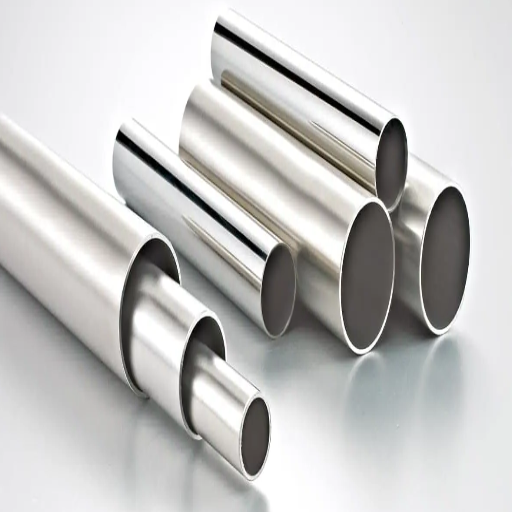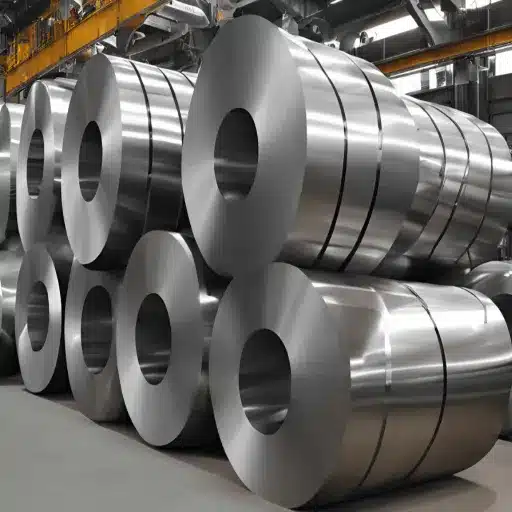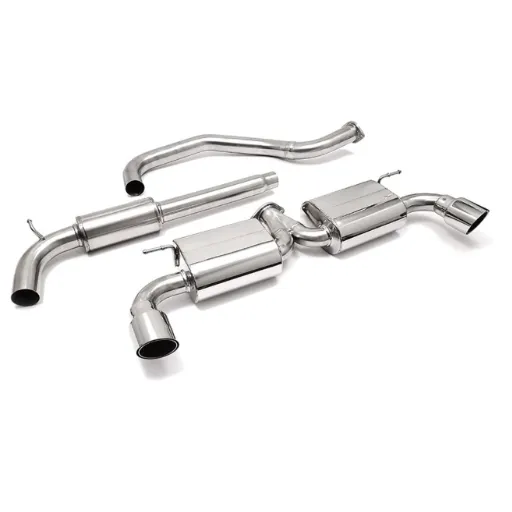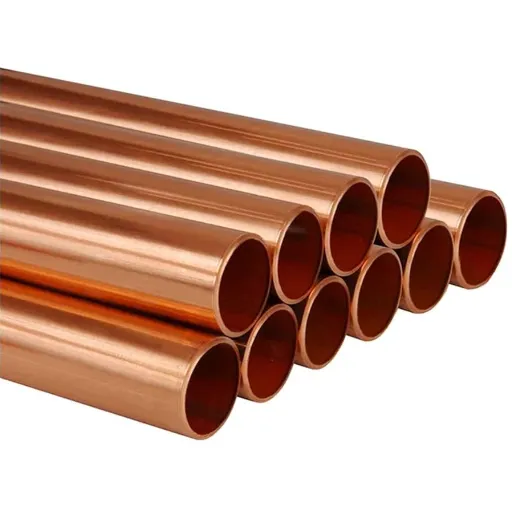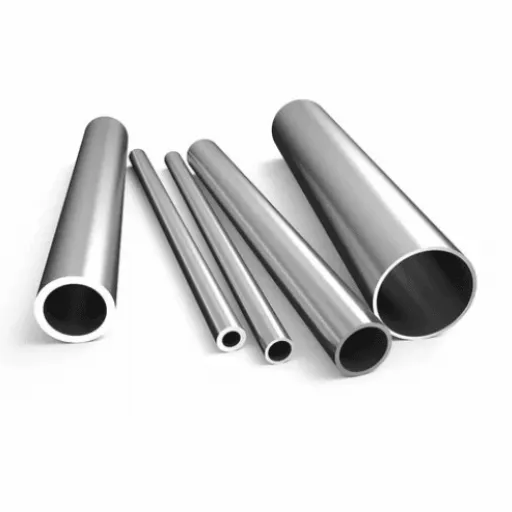Stainless steel is one of the most versatile and widely used materials in manufacturing, known for its strength, corrosion resistance, and aesthetic appeal. However, not all stainless steel is created equal, and choosing the right grade can significantly impact the longevity and performance of your application. Two of the most commonly used grades, 304 and 316 stainless steel, each have their own unique properties and advantages. But how do you determine which one is best for your specific needs? This article explores the key differences between 304 and 316 stainless steel, breaking down their composition, performance in various environments, and suitability for different industries. Whether you’re designing industrial equipment, building marine structures, or selecting materials for food processing, this guide will provide you with the knowledge to make an informed decision.
What are the Main Differences Between 304 vs 316 Stainless Steel?
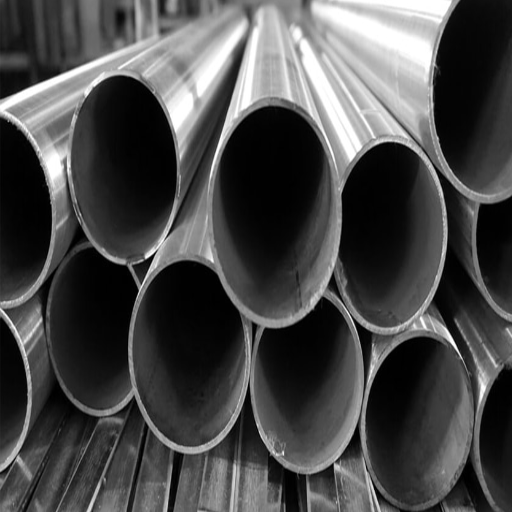
Understanding the chemical composition of 304 and 316
Both 304 and 316 stainless steel are a part of the austenitic family of stainless steels. Their primary difference rests in their chemical composition, which affects their properties and performance. The key difference is in the amount of molybdenum, which is a chemical element and improves corrosion resistance even further, particularly against chlorides and other harsh chemicals.
304 stainless steel contains roughly 18% chromium and 8% nickel. These components enable it to boast superb resistance to corrosion under normal conditions and high workability. However, 304 does not contain molybdenum, which makes it less resistant to pitting and crevice corrosion in chloride-rich environments such as coastal or marine settings.
316 stainless steel is similar in chromium and nickel content. However, it contains an additional 2-3% molybdenum. This additional component tremendously improves resistance to corrosion due to salts, acids, and humid conditions. These increase the suitability of 316 stainless steel for marine applications, chemical processing, and areas with high chloride concentration, so it outperforms 304 in those areas.
How molybdenum affects the corrosion resistance
Molybdenum increases the corrosion resistance of stainless steel by enhancing its performance against pitting and crevice attack, especially in chloride-rich environments. This occurs because molybdenum helps in the formation of a stable, passive oxide film on the steel that shields the material underneath from corrosive substances. Molybdenum-containing grades, unlike 304 stainless steel, have much better resistance to localized corrosion and hence are preferred in harsh environments.
The presence of molybdenum on the steel also helps sustain the protective barrier that is eroded by harsh chemicals and high salt content, like seawater, making pitting less likely to occur. Molybdenum in 316 stainless steel helps withstand such conditions while maintaining structural integrity over time, ensuring the material remains durable and dependable.
In addition, molybdenum improves the steel’s resistance to sulfuric, hydrochloric, and other potent acids that usually attack standard-grade steel, thereby reducing the effects of acid exposure. This ability is particularly useful in Industrial working chemicals where machinery and structure face long periods of use in a low-grade acidic environment. Hence, the incorporation of molybdenum not only improves durability but also significantly increases the life span of stainless steel parts that are used in harsh environments.
The role of nickel and chromium in these stainless steels
Both nickel and chromium are very important alloying elements in stainless steels because of how their individual properties impact the performance of the steel. As a key component of stainless steel, chromium forms a passive oxide layer covering the surface of the steel. This results in the stainless steel retaining its impermeability to corrosion and oxidation over other aggressive media. Understandably, there exists a cut-off chromium value of 10.5% below which steel can’t be considered as stainless. Even greater amounts within 20% deliver better protection, especially for oxidizing agents such as nitric acid, greatly augmenting its industrial value.
Nickel serves the purpose of augmenting the former qualities quite effectively within the austenitic grades. It keeps the structure nonmagnetic and ductile by maintaining the austenite phase, rendering the steel suitable for processes like forging and welding. Furthermore, within an oxygen-deprived atmosphere, nickel reduces the corrosion protection, which enhances its value when this type of steel is used in naval devices or chemical processing industries where splash zones are encountered.
Chromium and nickel combined have a synergistic effect, increasing both the corrosion resistance and mechanical properties of stainless steel. As a result, there is a wide variety of grades of stainless steel, including the widely used 304 and 316 types that are employed not only in construction but also in other sectors like pharmaceuticals. Each of these alloys has distinct advantages to serve certain environmental and operational challenges, which necessitate a precise balance of these elements depending on the specific requirements.
Why Choose 316 Stainless Steel Over 304?

Exploring the superior corrosion resistance of 316
The remarkable 316 stainless steel stands out because of its enduring resistance to corrosion in chloride, acid, and marine environments. This property adds to the bay’s usefulness due to its 2-3% composition of molybdenum. Molybdenum helps steel resist pitting and crevice corrosion, which are common in coastal regions and salty laddled environments, making it suitable for use in places like industries bordering salt water.
Its performance under extreme conditions makes it an effective contender in chemical silos. Molybdenum strengthens the steel’s ability to resist pitting and crevice corrosion, which increases the usability of 316 stainless steel. The steel is best suited within a cross to cope with oxidizing and non-oxidizing acids like sulfuric, phosphoric, and acetic. Its low-carbon variant 316L also provides the advantage of lowering the chances of intergranular corrosion after welding. All these features collectively extend the lifespan of equipment and structures while also facilitating manufacturing, exposing aggressive materials within harsh, relentlessly changing environmental and chemical conditions, justifying its frequent use in marine, pharmaceutical, and food processing.
Moreover, still comes to Stainless Steel 316’s enhanced cost-weighing features. With the ever-changing economic conditions, enhanced corrosion-resistant composites enable extended production uptime while also reducing the cost associated with maintaining corrosion-resistant steel aids in heavy surgical equipment, enabling reduced operating costs during periods of nonproduction. Consequently, these attributes increase the ability of the material to withstand stringent stress as well placed under corrosive stress, enabling sculpted parts.
Applications in chemical processing and food, and beverage
316 stainless steel is well-known for its use in the food, beverage, and chemical processing industries due to its superior resistance to corrosion, protective mechanism, mechanical strength, and hygienic features. The Stainless Steel Type 316’s resistance to corrosive environments and frequent contact with harsh cleaning chemicals makes it an absolute necessity in these industries. Below are five key applications where 316 stainless steel is used:
- Chemical Storage Tanks: 316 stainless steel is applied in the construction of chemical storage tanks for perpetually destructive chemicals like sulfuric acid, hydrochloric acid, and organic solvents. Its resistance to pitting and crevice corrosion helps the tanks maintain structural integrity over prolonged periods.
- Heat Exchangers: The alloy is perfect for heat exchangers in chemical processing plants. Consistent performance under exposure to changing temperatures at aggressive chemicals is paramount. While active in harsh environments of high pressure, high temperatures, and turbulent flow, the alloy facilitates superior efficiency by enhanced thermal conductivity.
- Equipment for Production of Food: Food production facilities extensively employ 316 stainless steel in devices ranging from mixing tanks to conveyor systems. Contamination-free surfaces are ensured because the material does not react. Its ability to withstand extreme temperatures during sterilization guarantees compliance with overwhelming regulations in food safety.
- Brewing and Distilling Equipment: This material is commonly used in the brewing and distilling industry, with its application in fermentation tanks, distillation columns, and storage vessels. The ability of this material to resist corrosion makes it possible to withstand acidic environments like those created by natural fermentation processes.
- Dairy Processing Facilities: This includes the use of 316 stainless steel in the dairy industry for the construction of milk storage tanks, pasteurizers, and piping systems. It is well known that lactic acid, alongside myriad cleaning agents, inflicts tremendous corrosive damage to industrial equipment. Not so with this material. Such resistance protects the product and prolongs the lifetime of equipment significantly.
These examples highlight the importance of 316 stainless steel in places where maintenance-free operation, sterility, and highly corrosion-resistant materials are required to minimize the operational hazards in the chemical, food, and beverage industries.
Impact of nickel content in 316 on performance
Nickel serves as a key alloying factor in 316 stainless steel and greatly impacts its performance features. Its composition of around 10-14% nickel enables the alloy to withstand corrosion, especially in acidic and chloride environments, because nickel assists in stabilizing the austenitic structure, providing exceptional toughness and strength at cryogenic temperatures. Nickel also helps improve the ductility of the alloy, which enhances its workability in mechanized fabrication and welding without affecting the mechanical properties of the steel.
Research data reveals the trend between saltwater exposure and pitting resistance due to higher nickel content compared to low nickel grade alloys. This makes 316 alloys stainless steels favorable materials for marine structures, chemical processing, and pharmaceuticals, as these industries require materials that can withstand harsh chemicals and saline conditions for prolonged periods. In addition, the addition of nickel reduces the magnetic permeability of the alloy, which is useful in medical and electronic devices magnets where minimal magnetic interactions are desired.
Controlling and optimizing these increases the efficiency of 316 alloys, making them better than their counterparts. Balancing nickel content enhances 316’s resistance to environmental damage, structural reliability, and flexibility, making it a go-to material where precision is critical throughout numerous industries.
How Does 316L Stainless Steel Compare to 316?
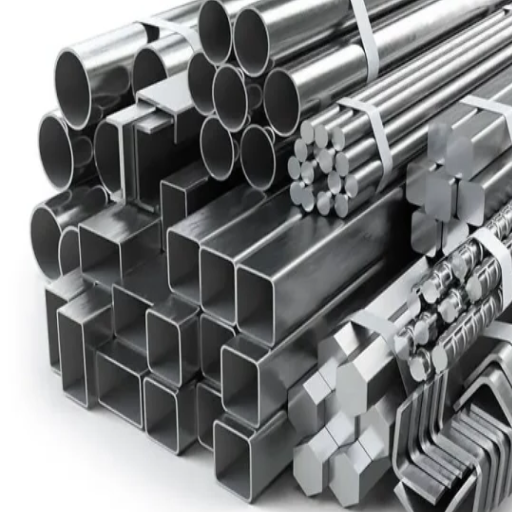
Differences in carbon content and weldability
With respect to 316, 316L has lower carbon content (Montana 0.03% max) compared to 316, which has a maximum of 0.08%. This increases the weldability of 316L and decreases the possibility of carbide precipitation, which enhances the intergranular corrosion resistance of the steel.
| Aspect | 316 | 316L |
|---|---|---|
|
Carbon Level |
Max 0.08% |
Max 0.03% |
|
Durability |
Higher |
Slightly lower |
|
Joining Ease |
Moderate |
Excellent |
|
Rust Resistance |
Good |
Better (less decay) |
|
Fabrication |
Good |
Better |
|
Expense |
Similar |
Similar |
Benefits of using 316 and 316L stainless steel in varying environments
316 and 316L stainless steel possess a variety of advantages, which make them useful across applications and under different conditions.
- Carnotite Resistant
Both 316 and 316L have outstanding corrosion resistance, especially in areas rich in chlorides like marine or coastal areas. Thus, they are used in shipbuilding industries, chemical processing, and even in desalination plants. Moreover, 316L’s reduced carbon content further aids in minimizing intergranular corrosion in the weld regions of the steel.
- High Temp Exothermic Resistance
Alloy, enduring marine, coastal, and other environments through extremes, maintains cellular structure and performance at elevated temperatures. 316 stainless steel can withstand burns at 800°C, while in boundless use, it can withstand 1472°F. On the other hand, 316L performs splendidly in hot and cold environments without compromising durability or resistance.
- Easier to Weld
316L is preferred in welded constructions because of its reliability compared to 316 due to its low carbon content and higher weldability, especially where thick-section welding is involved. Furthermore, welds tend to create long lasting constructions which suck up shocks. Since reinforced joints require dependable and trustworthy resistance, 316L proves to be the favored choice.
- Uses in Aggressive Chemical Environments
The resistance of both grades to harsh environments, such as sulfuric acid and phosphoric acid, is due to the molybdenum content. This aids in operational effectiveness and durability in the pharmaceuticals, food processing, and petrochemical industries.
- Versatility and Fabrication Simplicity
Both grades can be easily manipulated into complex forms, which increases manufacturability. In addition to meeting mechanical and aesthetic standards, 316 and 316L stainless steel can be used for medical implants, architectural structures, and industrial storage tanks.
The overwhelming performance results of 316 and 316L stainless steel reveal these alloys’ unexcelled adaptability to fulfill various operational and environmental requirements.
When is 304 Stainless Steel the Better Option?
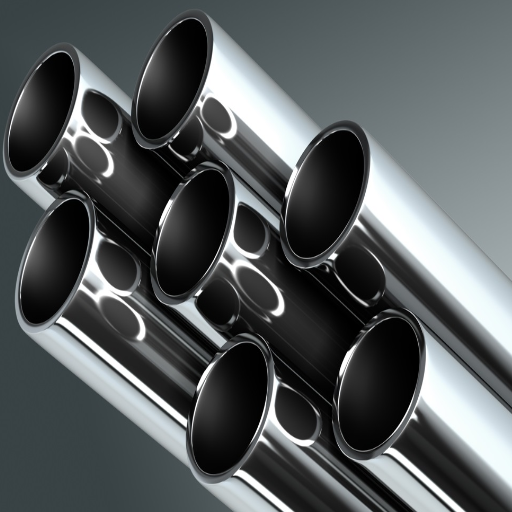
Cost-effectiveness for general applications
While exploring the use of stainless steel for a project, I always take into account operational requirements as well as the budget to arrive at the best option. For primary applications where the sustainability of components is a key consideration with noticeable corrosion and wear, but not at the outer limit, 304 stainless steel often comes out on top. Its price compared to 316 or 316L stainless steel makes it particularly beneficial in non-critical settings like food processing equipment, household appliances, and structural constituents of low-grade infrastructure.
One of the reasons I suggest using 304 stainless steel for projects with budget constraints is because of its cost-effectiveness about performance. This alloy will adequately resist oxidation and corrosion in less aggressive environments, thereby saving on material costs without sacrificing critical factors like strength and formability. Moreover, the alloy’s availability makes it more cost-effective due to reduced lead times and logistical costs associated with procurement.
Still, I try to look into the particular constraints associated with the application. While low and mid-range corrosive agent environments are within the operating capabilities of 304 stainless steel, marine or heavy industrial conditions would prove too harsh for them. This is where the additional molybdenum in 316 stainless steel becomes highly useful. Hence, for most standard 304 achieves unparalleled value with a reasonable level of performance, while 316 does not.
Performance in non-corrosive environments
Due to its constant value and constructive nature, 304 stainless steel also cost-effectively performs well in non-corrosive environments; types of environments free from aggressive corrosive elements like chloride ions enable 304 stainless steel to have both its form and polish for long durations. Its chemical structure features iron, chromium (18%-20%), and nickel (8%-10.5 %), which provides versatility for general-use applications from strength to workability.
In combination with unchanged temperature and moisture levels, 304 stainless steel has been shown to withstand erosion, withstanding wear, which has strong implications for food processing, indoor medical architecture, and surgical instruments. Industries looking for dependable value often use 304 due to its economic pricing in comparison to grade 316. With all variables such as humidity and temperature, focus on mechanical stress for a more meticulous approach for use.
For applications requiring no forms of corrosion with higher tensile but lower fatigue concerned metals, 304 and 316 are regarded equa, where in long-term operational lifespans or critical load scenarios are the only areas where differences can be distinguished.
Comparing the mechanical properties of 304 vs 316
Despite being more cost-effective and flexible, 304 stainless steel lacks the tensile strength offered by 316 stainless steel, which is ideal for harsh chemical and marine environments. This is because 316 steel contains molybdenum, which improves corrosion resistance.
Here’s a concise table summarizing the key mechanical differences:
| Aspect | 304 | 316 |
|---|---|---|
|
Tensile Strength |
500-700 MPa |
515-620 MPa |
|
Yield Strength |
205 MPa |
240 MPa |
|
Hardness |
70 HRB |
80 HRB |
|
Elongation |
70% |
60% |
|
Corrosion |
Good |
Superior |
|
Cost |
Lower |
Higher |
How to Decide Between 304L vs 316L Stainless Steel?
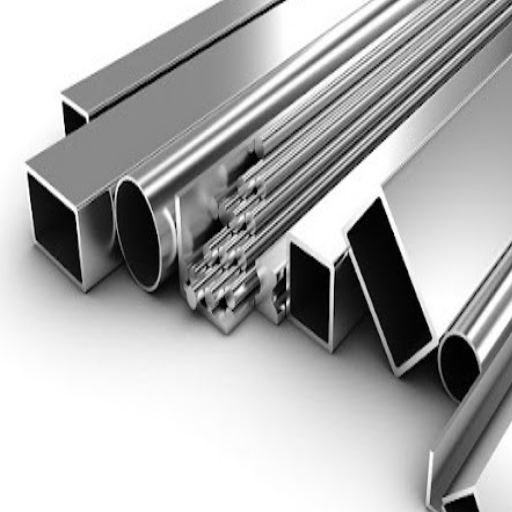
Assessing the tensile strength and mechanical properties
In the examination of 304L and 316L stainless steels, tensile strength and other mechanical properties are critical in determining the performance of the alloys. For instance, the 304L stainless steel tends to have a minimum tensile strength of around 70 ksi (485 MPa), whereas 316L has a slightly higher tensile strength of about 80 ksi (550 MPa). These values highlight the differences related to structural performance under mechanical stress.
Further differences between the alloys can be observed in yield strength and elongation. 304L is more ductile than 316L, with elongation at fracture exceeding 40% compared to 316L’s 35%. Therefore, 304L is more appropriate for applications that require considerable deformation without damaging the material. On the other hand, 316L has higher yield strength, generally at 25 ksi (170 MPa) compared to 304L’s 20 ksi (140 MPa), which enables 316L to withstand greater static loads in certain conditions.
Moreover, the content of molybdenum in 316L, which is known to improve pitting and crevice corrosion resistance, should be noted. While the mechanical properties are the first to drive decision making, with regard to the selective environment, such as the presence of chlorides or another aggressive factor, the choice justifies the cost difference for 316L. Precisely making decisions requires that one conducts extensive analyses of application requirements, operational conditions, and lifecycle performance so that they can apportion these mechanical characteristics proficiently.
Considerations for high temperatures and acid exposure
The materials used in high-temperature applications require careful analysis for their thermal expansion properties, creep resistance, and thermal conductivity. Due to their excellent performance under high temperature conditions, alloys such as stainless steel grade 316L are commonly used. Their performance is further improved due to the lower carbon content in 316L Stainless steel, which helps to reduce depletion of carbides during high temperatures. This results in better structural properties and corrosion resistance of the steel. The mechanical properties of the constituents may be altered by microstructural variation due to high temperatures; hence, extensive analysis concerning long-term thermal durability evaluation is a prerequisite for assessing long-term reliability in actual working situations.
The combination of acids brings about an added difficulty with respect to the selection of materials. Most materials are unable to withstand the effects of strong hydrochloric, sulfuric, or nitric acids and are prone to pitting, crevice corrosion, or stress corrosion cracking. However, molybdenum-containing alloys like 316L withstand these aggressive environments due to their exceptional resistance to highly acidic corrosive substances. Despite this fact, it is important to conduct specific environmental analysis regarding the corrosion rate of the alloy in order to ascertain the survivability of the protective oxide layer, as its degradation can greatly hinder the integrity of the material and mechanically violent conditions.
The synergy of high acid temperatures can dramatically impact the stability of a material. Acids at higher temperatures can be more corrosive, leading to further material degradation. To control these effects, operational limits like pressure, thermal cycling, and exposure time need to be closely monitored. Modern coatings and surface treatments, such as electropolishing and protective coating application, can help prevent corrosive damage at high levels. In the end, it is vital to model the problem with the right multidisciplinary techniques by using computational models to predict performance and experiments to validate the resistance under simulated conditions.
Choosing based on steel pipes or food processing requirements
It is important to consider hygiene, grade of material, surface finishing, and even operating temperatures while choosing steel pipes for food processing. For food processing purposes, a stainless steel 304 or 316 is often chosen because of its corrosion resistance and ability to withstand cleaning at high temperatures. Grade 316 is preferred due to its greater content of molybdenum, which gives it more resistance to pitting and crevice corrosion in salted or acidic environments.
Polishing or electropolishing improves the surface finish, but more importantly, it maintains sanitary conditions for food processing. Also, surfaces that are polished or electropolished are more easily cleaned and sterilized because they are less rough. Conditions of operation also affect material selection, especially when dealing with high viscosity or pressurized fluids. The flow dynamics and bacterial contamination must be optimized by examining the thickness of walls, the diameter of the pipes, and the configuration of joints. Reliable and safe design of piping systems that meet the predetermined conditions can be easily performed with the use of advanced computational fluid dynamics modeling.
The use of appropriate steel pipes, when coupled with proper maintenance schedules and active monitoring systems for early detection of wear and tear or contamination, can maximize operational productivity and enhance product safety in food processing plants.
References
-
Polycase: “Deciding on the Best Material – 304 vs. 316 Stainless Steel” – Discusses the applications and differences between 304 and 316 stainless steel.
-
Unified Alloys: “304 vs 316 Stainless Steel: What You Need to Know” – Provides insights into the performance, cost, and applications of both grades.
-
Thyssenkrupp Materials: “Difference Between stainless steel 316 and 304” – Explains the chemical and practical differences between the two grades.
Frequently Asked Questions (FAQ)
Q: What are the main differences in stainless steel properties between 304 and 316 grade stainless steel?
A: The primary difference lies in the composition. 316 grade contains molybdenum, which enhances corrosion resistance, especially against chlorides and industrial solvents, making it more suitable for harsh environments.
Q: Why should I consider using 316 stainless steel over 304 grade stainless steel?
A: 316 stainless steel is better for environments with high exposure to chlorides and acids due to its excellent corrosion resistance. It is often used in marine applications and chemical processing.
Q: Is 304 stainless steel suitable for kitchen equipment?
A: Yes, 304 stainless steel is a common stainless steel used in kitchen equipment because of its excellent corrosion resistance, affordability, and ability to withstand everyday wear and tear.
Q: What type of stainless steel is best for food and beverage processing?
A: Both 304 and 316 stainless steel are used in food and beverage processing, but 316 is preferred when enhanced corrosion resistance is required, particularly in environments with high exposure to salt or harsh chemicals.
Q: How does the strength of 316 compare to 304 grade stainless?
A: The strength of 316 stainless steel is similar to 304; however, 316 offers better resistance to pitting and crevice corrosion in chloride environments, which can be critical depending on the application.
Q: Is there a significant cost difference when choosing between 304 and 316 stainless steel?
A: Yes, 316 stainless steel is generally more expensive than 304 due to the addition of molybdenum and nickel, which contribute to its enhanced corrosion resistance.
Q: Can 304L stainless steel be used in place of 316 in certain applications?
A: 304L stainless steel, with lower carbon content, is used where welding is required to minimize carbide precipitation. However, it may not offer the same level of corrosion resistance as 316 in chloride-rich environments.
Q: How long does 304 grade stainless steel last in typical applications?
A: 304 lasts 15–30 years in most environments, but this can vary based on conditions such as exposure to harsh chemicals and maintenance practices.
Q: What are the advantages of austenitic stainless steel alloys like 304 and 316?
A: Austenitic stainless steels, including 304 and 316, offer excellent toughness, formability, and corrosion resistance. They are non-magnetic and maintain strength at high temperatures, making them versatile for various applications.
Q: What factors should influence the selection of stainless steel grade for my project?
A: Consider the environment, exposure to corrosive elements, required strength, and cost. 316 often offers better corrosion resistance, while 304 can be more cost-effective for less demanding applications.

